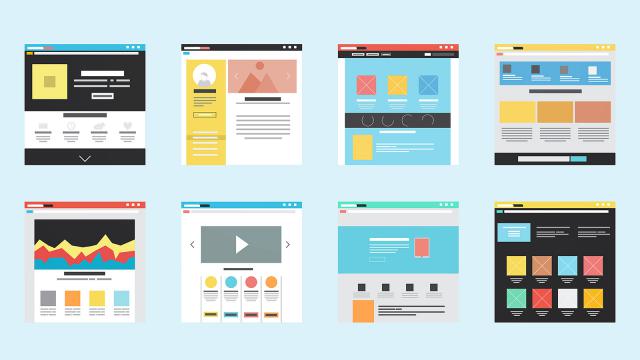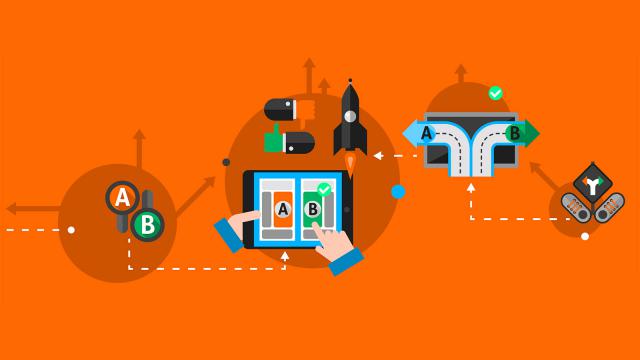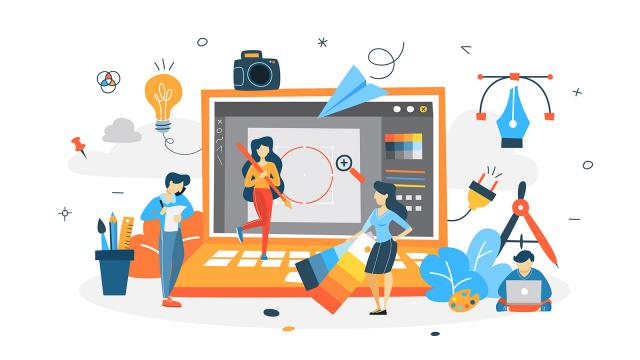What is UX design?
There is no general, commonly accepted definition of UX design. UX design is a concept that has several dimensions and includes many different disciplines - such as interaction design, information architecture, visual design, usability and human-computer interaction. In the next chapter, I will try to create a clearer picture of what exactly this means.
Definition of UX design
UX Design is the process of creating products that, in addition to usefulness, also provide a personal experience to their users. UX design includes the usability of the product and the experience we get during use. It also includes the entire process of acquiring and integrating a product, including aspects related to branding, design, usability, and function.
Products that provide a good user experience (e.g. the iPhone) are designed with not only the use of the product in mind, but also the entire process of acquisition, ownership and troubleshooting.
An important part of UX design is the process by which consumers create an experience. When they meet the product for the first time, the consumer forms a momentary opinion, which changes over time - typically during the use of the product. In this process, the consumer's experiences, actions, motivation and cognition combine and form the unforgettable and connected story: the "user experience". This process triggers emotional reactions that greatly influence whether the experience will be positive or negative.
UX designers constantly strive to improve the user experience during their work. In order for this to succeed, the UX designer must take into account the what, the why and the how of the product.
Why seeks an answer to why the consumer chose the given product. Because you want to perform a specific task with it, or because you prefer the value of owning and using it. You know when someone buys a product simply because owning it gives them pleasure? What expresses what can be done with the product, i.e. its functionality. And How examines the design of the product's function from a usability and aesthetic point of view. UX design starts with the why, then defines the what, and finally answers the how in order to create products that are a pleasure to use.
I wrote a very good comprehensive article on the presentation of the entire UX design process, it is worth reading!
In this article, we will cover the following topics:
Tartalomjegyzék
- What is UX design?
- Definition of UX design
- Why is UX design important?
- Factors affecting UX
- Areas related to the construction of the user experience
- What is the difference between UX design and UI (User Interface) design?
- What does a UX designer do?
- User Experience in business
- The most important UX and UI terms
- The most common UX Design misconceptions
- The most common UX Design mistakes
- UX design trends in 2020
- 10 quick UX Design tips to improve user experience
- The best UX blogs
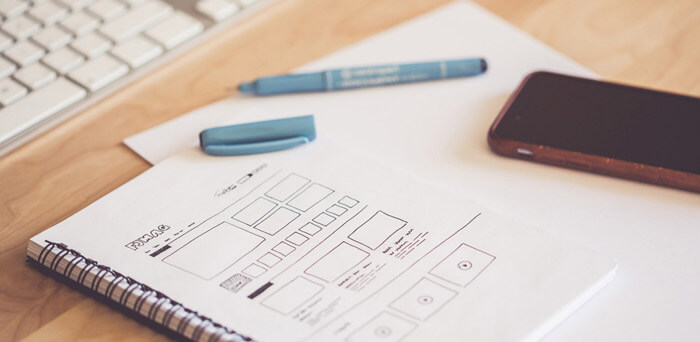
Why is UX design important?
You can simply say, "It's important because it addresses the needs of consumers," and that's the point. But the truth is, it wasn't always like that. Before consumer-centric design became clear and understood, we made our decisions based on two things: what we as designers thought would be good and what the client wanted to see. However, the last decade has brought a lot of changes in this area. Websites have become so complicated and feature-rich that the previous approach had to be changed.
Consumers browse with the help of mobile devices, using several operating systems, many types of browsers with Internet connections of different bandwidths. We became aware of the importance of availability and speed. We do not develop according to the needs of a team that is often detached from reality, but for the visitors. Within that, also for the visitor layer who make up the target audience of the given website.
In addition to these huge changes, the only websites that stand out from the crowd are those that are tailored to the needs of users and that are a pleasure to use. During the development of today's websites, the most important driving force has become the user experience we want to give our website visitors. Because the happy, satisfied visitor will sign up, buy, share the articles and promote the site.
Factors affecting UX
The foundation of UX is to ensure that users find value in what we provide them.
- Useful. As practitioners, we cannot be satisfied with the guidelines outlined by managers. It takes enough courage and curiosity to ask ourselves whether our product will really be useful for visitors. And if we are not sure of the answer, we need to look for new solutions that can make it more useful.
- Can be used. Ease of use is still vital, but interface-centric design methodologies and human-computer interaction perspectives do not apply to all areas of web design. In short, usability is necessary, but not sufficient.
- Desirable. The pursuit of efficiency must be supported by the image, identity, brand and other emotional design elements so that the visitor does not see a cold profit factory, but a lovable brand.
- Can be found. Easy-to-navigate websites must be developed so that consumers can find what they are looking for.
- Available. Just as buildings have elevators and wheelchair ramps, our websites must be accessible to people with disabilities (more than 10% of the population).
- Authentic. Thanks to the Web Credibility Project, we are beginning to understand which design elements influence consumers' opinions in terms of whether they believe what we tell them, whether they trust the information provided by the website.
- Valuable. Our pages must convey value to visitors. Regardless of whether it is a non-profit or a porfit-oriented business, user experience is a priority area in the process of increasing customer satisfaction.
Areas related to the construction of the user experience
UX is a constantly growing field that is still adding new elements more and more. To create a truly successful user-centric design, you need to know the principles of human-computer interaction and, in addition, the following areas:
- Project Management: focuses on the planning and management of a project and its resources. This includes the definition and management of the life cycle, the composition and management of the project team until it is completed.
- Consumer Research focuses on understanding the behavior, needs, and motivation of users, using observational techniques, task analysis, and other methodologies.
- Usability analysis focuses on how well consumers can learn and use the product to achieve their goals. This includes how satisfied users are with the process.
- Information Architecture focuses on how well information is organized, structured and presented to users.
- User Interface Design focuses on figuring out what users want to do and ensures that the elements of the interface are easily accessible and understandable and help the user achieve their goals.
- Interaction Design focuses primarily on creating interactive systems that exhibit well-thought-out behavior.
- Visual Design provides the aesthetically pleasing interface that is in line with the brand's goals.
- The Content Strategy focuses on planning the choice of topic, timing, useful and relevant article writing and publishing.
- Accessibility focuses on how a person with a disability can access and absorb the information displayed on the website and software.
- Web Analitika focuses on the collection and analysis of website data and the preparation of reports.
What is the difference between UX design and UI (User Interface) design?
In recent years, UX-related names have been constantly multiplying, which only further complicate the conceptual confusion related to the activity. In this section, I will try to highlight the differences between UX and User Interface (UI) design. It is also easy to confuse the two concepts because there is a lot of overlap between the two areas, especially when doing user testing. So let's look at the main differences between UX and UI:
User Experience (UX) Designer
- consultations with customers and buyers
- conducting consumer research
- defining consumer goals and user personas
- product design with consumers' needs in mind
- defining the requirements of the User Interface
- planning the visitor's route on the website
- creating wireframe and UI specifications
User Interface (UI) Designer
- designing user touchpoints
- designing the behavior of the User Interface
- creating the visual appearance of the interface
- making decisions about color and typography
- visual hierarchy design
- designing user interactions
- developing and defining a consistent visual language
What does a UX designer do?
Below, without claiming to be exhaustive, I would like to introduce some interesting areas that are part of the UX designer's activities:
Making wireframes
The preparation of the wireframe - which is actually a schematic plan for the layout of the website or application - is one of the tasks of the UX designer.
Instead of the images previously created by designers, today we work with tools such as Balsamiq Mockups and Axure RP, which allow us to transform a wireframe into an interactive prototype without coding.
Although many UX designers emphasize that they do not only work with wireframes, the fact is that many of them start with wireframes: all of them can create a wireframe for a basic website, and learning the necessary software is not complicated.
User testing
One of the basic forms of user testing is to sit users in front of the website or application and give them pre-planned tasks while asking them to think aloud about the solution.
How many test subjects we include, how similar they are to the target audience and how many times we run the test are decisions that are determined by the available time and financial framework.
User testing is so easy that anyone can try your app. Being in a room with a person who is struggling with using our product has a big impact on designers and developers and starts an empathic process that will have a positive effect on everyone involved in the project.
Persona creation
A persona covers a fictional identity that reflects the user group for whom the product is designed.
Personas need to be informed by research in order for user testing to be useful. It helps a lot if we make the survey in which they participate as believable and interesting as possible. The aim is that these personalities reflect the habits, behavior and attitude of the target audience towards the product.
Creation of scenarios and storyboards
The scenario is a narrative description in which you tell the average day of a persona, including how the use of the website or application is integrated into their life. If you are proficient in writing user stories, you will also be able to write scenarios, but the focus here is on general usage and not on individual cases.
Depending on the audience, a scenario may be the best tool to capture when, where and why someone would use the product. Borrowed from the film industry, the script is actually a visual sequence of events that shows the user's relationship with the product. The script can be a very rough draft - mainly to clarify ideas - or even a well-developed comic book to involve the decision makers.
User Experience in business
What do a start-up, a small business and a large company have in common? The answer is relatively simple: the success of every company depends on whether their customers are satisfied with their products and services.
In recent years, many people have realized the importance of UX design and are investing more and more in the research and development of the field. UX auditing is the right tool to determine the user experience of an existing website. During the UX audit, the shortcomings and errors of the website come to light, which adversely affect the user experience and thus have a negative impact on the perception of the website and the company.
In the case of a webshop dealing with online sales, the UX audit not only affects the perception of the website and the company, but also directly on sales, which is why screening and auditing webshops and correcting deficiencies and errors will have an immediate impact on the company's revenues.
Whether physical or digital, a product has an emotional and intellectual impact on its consumer not just by how it works, but also by how it looks and feels. Whether this experience will be good or bad will have a big impact on sales and this is exactly what a good UX design team can help a lot with.
How does UX support sales?
UX is basically about two things – the user and the experience. Give your users a positive experience and they will reward you with their trust and loyalty. According to overseas statistics, companies with effective UX increased their revenue by 37%. This clearly shows the extraordinary payoff of UX design.
If the user has a bad experience while using the product, he quickly moves on and looks for another one. 90% of consumers stop using an application due to poor performance, and 86% delete or remove the software from their device due to functionality or design issues. Meanwhile, research shows that 86% of users say it's worth paying more for a superior consumer experience. Taking these into account, it is not so difficult to understand why User Experience focuses on companies such as Apple, Google, Adobe, Dropbox and Amazon, which have been leaders in their fields for many years.
Although it is important to have a good product, these days it is no longer enough to stay one step ahead of the competition in business. In many cases, the energy invested in UX design is what decides who will be the market leader in a given area. An engaging user experience is proven to attract users' interest, but more importantly, it also wins their loyalty. According to 48% of users, if they go to a website that doesn't work or doesn't display properly on mobile, that company doesn't care about their customers. And according to 52% of them, if the page is displayed poorly on mobile, it is unlikely that they will contact the company.
Responsiveness is not enough these days; 40% of users leave a website if it takes more than three seconds to load, while 79% prefer to find another page to solve their problem.
User experience design
What about the design? How important is the aesthetics of your website (or product) when it comes to user experience?
Using an interesting experiment, M. Tractinsky tested consumers' experiences of the relationship between the aesthetics and usability of computer systems. The result conclusively proved that the aesthetic role in human-computer interaction is of paramount importance and must always be taken into account when satisfying the needs of consumers.
I can say for sure that the market value of UX design is so high that no company can afford to ignore the support of a well-trained UX design team who can create the experience that consumers will experience during the product or service.
Since design focuses on the consumer's experience, the company is forced to make the product for the consumer. This creates a continuously strengthening relationship between the customer and the product.

The most important UX and UI terms
Like any profession, UX design has its own distinctive jargon and abbreviations. Here is a list of the top 10 terms.
User-centered design: the design process where the main point of reference is the needs of the consumer (rather than the needs of the programmer or the client).
Survey of consumer habits: Information-gathering techniques, with the help of which we understand the behavior and needs of consumers. This may include interviews with consumers, which may be formal gatherings or informal conversations with one person or a group. The goal is to help the UX designer understand the needs and goals of consumers.
Consumer Journey: A description of the steps a consumer goes through as he interacts with the product and eventually becomes a user.
Usability: How easy it is to learn how to use the product.
Personality (persona): a profile of the consumer group (eg: Péter is the project manager, Anna is the accountant, András is the receptionist), which defines the character and its goals when using the product/service.
Conceptual sketches: small, impromptu solid sketches of consumer interfaces such as websites, applications, packaging.
Wireframe: a rough outline of the design of the website or application. The purpose of a wireframe is to design the floor plan and visual hierarchy without distracting images, colors or typography.
To be handed over: the product that we hand over to the customer. This can be an intermediate product, such as a wireframe or a sample piece, or it can be a finished product, such as a finished final style sheet or a screen design for a complete set of applications.

The most common UX Design misconceptions
Design exactly what your users want
Consumer input is one of the most important things in UX design. This information helps us understand the positives and negatives of the consumer's user experience. However, there is one important thing: when you listen to consumers, try not to design exactly what they want. Rather, focus on what their needs are. Listen to them, do your research, ask questions and think ahead. A good designer always digs deep and tries to understand the reasons behind the desire. Recognizing the real needs of consumers is proven to be the best solution.
UX and UI are the same
The two concepts overlap quite a bit and it is impossible to deal with UX without paying attention to UI. But it is very important to understand the difference between the two during the design process. UX is the result of comprehensive business, social and technology analyses. The UI, on the other hand, is the visual part of this that communicates directly with consumers using a unique form world that makes the entire UX better. A balance between UX and UI leads to a smooth and seamless consumer experience.
It is always best to follow the trends
The best approach in this case is to understand why the given trend is popular and whether it is permissible to base our UX strategy on it. For example, a unique design is always a better choice than using trendy templates. In addition, the problem with template-based projects is that they are very difficult to stand out from the rest. Despite this, in our practice there are cases where we start from a template-based solution after examining aspects of time, cost, and efficiency.
Simple means minimalist
As the saying goes, genius lies in simplicity. However, simplicity does not always mean minimalist. Behind the simple design is often a very complex UX structure. It is much more important to make the design clear and understandable and not to mark simplicity as a priority.
Good design also means good UX
Many people quote this misconception and take it for granted. You might think it's true, but it's not always true. Good design can be aesthetically beautiful, but it does not always provide a good user experience.
Let's say you visit a website to buy a book. The site is full of huge high quality images, amazing flash animations, beautiful font, …etc. But you can't find the search engine to find the book you want. You finally have the book, but you can't find where to put it in the cart. As soon as you have put it in the basket, you want to pay, but the page loads very slowly and when you press refresh, it forgets the contents of the basket, throws it back to the home page, and you can start all over again. Will you buy this book? I think not. It was such a beautiful site...
Remember, good UX focuses on experience—function, ease of use, and many other elements that go along with it. It's not just the design that matters.
UX is only one step in the entire project process
Some people think that UX is only about designing user interfaces. In fact, UX starts with strategy and research, which later seamlessly merges into the process of project development. UX is an iterative process that includes testing, development support, and subsequent fixes and modifications as needed.
Debunking UX myths is often about trying to break through them in order not to fall victim to the limitations they set up. We have to constantly question these commonly imagined misconceptions, this is the only way we will be able to produce cutting-edge fantastic products.
UX is damn expensive
Another common misconception about UX is that it is very expensive in both time and money. The reason for this is usually the cost of hiring an experienced, talented UX specialist. On the other hand, many people tend to think that the UX process can be infinitely long and costs can fly away because of this.
But if you think of it as a kind of investment that provides long-term sustainable income, then the previously thought high costs come into a completely different light.
The homepage of the website is the most important
UX experts have long debated whether the home page is the most important page on a website. The logic behind the statement was understandable at a time when such statements were commonplace. However, surveys have shown that with the development of search engines, this rule has changed many years ago.
Google's algorithm indexes all pages of the website that users can find during their searches. This means that the visitor's first impression may be from a completely random page on your website. This further supports the importance of a well-designed website structure and content hierarchy. On the other hand, it refutes the principle that the opening page must be good, investing much less energy in the subpages.
Your consumers are just like you
When designing a website, it's easy to assume that your visitors will interpret and navigate it the same way you do. But the reality is that they will behave in completely unpredictable ways in advance. This is caused by the difference in computer skills and the personality of the visitors. Incidentally, this fact was only highlighted by the UX research itself. When we sat down a couple of target persons in front of a machine and asked them to look at a website, while we recorded where they were looking and what mouse movements they were making, it only then became obvious that in most cases they behaved in ways contrary to our ideas. They did not accept the information on the page in the order and speed, and many times they did not click on it, as would have been probable for us.
That is why it is important to make the user interface and browsing experience on your site as simple as possible. In addition, it is recommended to conduct research and set up focus groups in order to better understand our target audience.
People read on the web
When a user enters your website, they skim the content looking for keywords and titles. Unless you're really interested in the content, you won't read the text word for word, just the headlines and highlights. If the page is not optimized for this so-called scanned reading, the user will not find what he is looking for, he will leave the page without ever knowing what he missed.
Knowing this, it is very important to create a website that caters to such a fast information browsing style. This principle includes breaking larger text into smaller, more digestible chunks, and using large bold headings, lists and subheadings wherever possible.
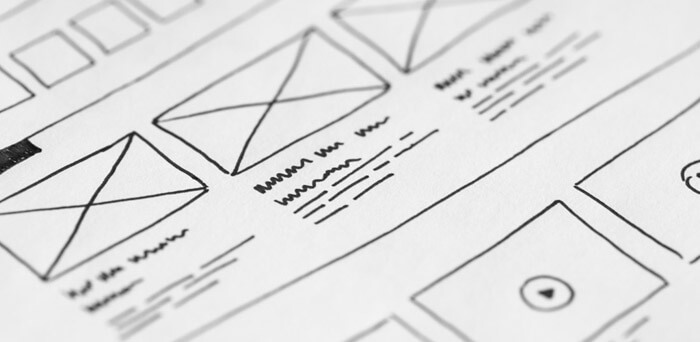
The most common UX Design mistakes
In a world where we focus on providing the best user experience for higher sales and growing subscriptions, it's easy to forget about the little details that really make our website stand out. Regardless of whether you are designing a website or a mobile app, here you will find the most common and biggest UX mistakes that can really mess things up in a project.
1. You don't spend enough time on research
This is one of the most common mistakes that amateur designers make. When creating an application or website, it is crucial to do thorough research. It is necessary to know the target audience thoroughly in order to create something that meets their needs. Since graphic design is not a cheap hobby, you should only approach it if you already know the behavior and expectations of the target audience.
2. Lack of A/B testing
This error is very common and can have a very bad effect on conversions. Before starting a project, you need to test it several times to make sure that what you have created will be effective. In order to eliminate any mistakes, perform A/B tests several times until we are satisfied with the results. The process is quite time-consuming and requires full concentration, but success is guaranteed.
3. You use too many form fields
User satisfaction should also be a priority when designing a form. However, this is only possible if you avoid excessive use of form fields. If a user encounters too many form fields, they may lose patience and exit before contacting you or ordering a product or service. Ask yourself, how many times have you had to register on websites by entering unnecessary information? Don't expect your visitors to be more patient than you. Remove the fields from your forms that you can easily collect information about later, even after the contact.
4. Forcing users to log in
I can't even count the number of times I've tried to do something simple on a website only to find out that it doesn't work without logging in. Logging in itself is made a bit easier with social media login options, although the fact that I have to give out my Facebook username (and become a potential target) is pretty annoying. From a UX point of view, the need to log in should be eliminated or at least avoided as long as possible.
5. Lack of mobile optimization
I cannot stress the importance of this enough! If you haven't started thinking about responsiveness yet, you are unfortunately very far behind. Due to the sudden rise of mobile devices and the decline of desktop use, it is necessary to make your website mobile-friendly. If the user has to wait for all the images to load or scale the screen to read the text, the design will have a very serious effect on conversion. One of the easiest ways to avoid this problem is to use responsive design. With this technique, you don't need to create multiple website versions to make it device-independent (and Google also recommends this solution.)
6. Confused user interface
All your efforts will be wasted if the user cannot easily navigate within the application/website. A bad and deceptive interface leads to fewer downloads, conversions, and subscriptions. A new visitor may download the application at first, but after experiencing how complicated the interface is to use, they will delete it without a second thought. When we focus on the quality of the design, make sure it is simple and user-friendly so that the visitor can use it without any problems.
7. You don't take user feedback into account
A large area of UX deals with how the ideal user can send feedback to your website or application. Obviously, it would be a big mistake not to incorporate user feedback into the design improvement process. As designers, it is difficult for us to imitate the same experience that a person experiences on the first visit. That is why it is important to ask for feedback rather than trying to guess the quality, operation and functions of the site ourselves. It is important to receive feedback as soon as possible, because if we leave it to the last minute, we will most likely not be able to improve the design much.
8. You don't pay attention to the quality of the content
No matter how catchy the design of a website is, if you can't write meaningful and interesting content, it will be difficult to get users to visit the site. Regardless of whether it is a website, a blog or an application, content always matters a lot. A page with relevant and useful information not only attracts new users, but also encourages existing users to continue browsing. This additional browsing increases the time spent on the site, which Google evaluates positively, improves the site's rankings, and as a result, the number of new visitors from search engines will also increase.
9. Lack of storytelling
It is crucial for the designer to color each step of the visitor's journey with storytelling. People often take too long to grasp the message behind certain things. In order to make the user's journey easy to understand and memorable, we spice up the page with a little storytelling.
10. You think that the competition does not deal with UX
Don't think that only you can think of UX. Knowing that the field of website and app design is full of talented newcomers, it would be silly to assume that the competition does not deal with UX. Unfortunately, too many beginning designers are not aware of the basics of UX, and those who are, are often simply not interested in them. That's why it's worth asking the designer about a few things related to UX, and if you see that he has no knowledge or doesn't deal with it, you'd better find another team, because your competitors would do the same.
11. You overcomplicate things
The simpler the design, the easier it is to understand, use, navigate and everything else related to UX. Creating a complicated design is not only difficult, but also annoying for users to use, especially on mobile. Complicated design can lead to a small touch surface, small links, readability and many other problems.
12. You don't make visitors happy
The main goal of every website owner is to maximize sales. There is a short and very effective solution to this: the method works by making users happy. After starting the project, try to increase the satisfaction of the users and you will see very good results in a short time. This is one of the best ways to convert a simple user into a potential customer.

UX design trends in 2020
1. Time-saving design
Good UX is intuitive and saves users time – especially with linear design, which allows users to focus on one topic at a time. For example, Uber takes you through a series of simple and transparent steps in its booking system.
With the development of chatbots and artificial intelligence, we come across more and more interesting time-saving solutions these days. Things like chatbots supported by artificial intelligence to manage customer service tasks will save time not only for users, but also for company employees, and the time saved in this way can be used for further innovations.
2. Smarter personalization
Companies and users alike love personalization. In 2017, however, the personalization of information provided unpleasant surprises. Many people were shocked by the results of Brexit and the US election, as they saw everywhere on social media that the whole world agreed with them.
“The next generation of personalized experience needs to change.”
Facebook and other social networking sites must also change their algorithm in order not to trap their users in their own opinions. These could be, for example, solutions that deliberately display different opinions in the news feed, thus avoiding the trap of excessive personalization.
3. Measurements beyond the user interface
Traditional methods of measuring UX include how much time the user spends on the site, how they navigate between pages or where they exit before making a purchase. Since more and more experiences go beyond the digital nature - the experience itself becomes the product - companies are therefore conducting more experience-centered measurements in order to assess our usage habits.
Spectacles company Snapchat Spectales is a perfect example of how a digital product can be seamlessly integrated into the user's life. It produces a fashionable accessory that modernizes the interaction between users with the help of Spanchat and all this without using a phone. They achieve a positive impact on users with this multifunctional product, which is a simple and easy way to share experiences. Interesting experiences can be expected in this field.
4. Expanding UX areas and specialization
UX has always been a broad field, but in 2017 specialization will shift towards new technologies and industries such as virtual reality, artificial intelligence and industries such as health and fitness.
"Everyone involved in the development of user-related elements becomes part of the UX team."
As the product itself becomes an experience, companies must learn that UX does not belong only to the UX designer, everyone must participate in tasks affecting the user experience.
5. UX as a management practice
Forward-thinking companies already see the benefit and importance of UX design in the development of their products and services. But what will become even more common in the future - in fact, it may even be commonplace - is UX design for employees.
In the future, managers will imagine themselves in the place of employees and walk their user journey: they will examine their experiences during their daily work. They examine how they experience ideation, success or even failure within the company. This experience will have a great impact on the motivation of employees and will lead to a series of innovations in all parts of the business processes.
6.Voice-based search and control
2017 brought a breakthrough in the life of voice-based, or more precisely, voice-controlled devices. Countless companies (Google, Amazon, Apple) offer such devices, and today more than 30 million households in the United States alone have such devices. In other words, people are already willing to buy it, but it has not yet been integrated into everyday life as much as they had previously expected.
It is clear from the above figures that the use of voice-based systems should be considered a priority in 2018. Physical contact between users and their devices will increasingly disappear. This is a huge challenge and at the same time an opportunity for UX designers to innovate and experiment, since there are no standardized tools and software yet.
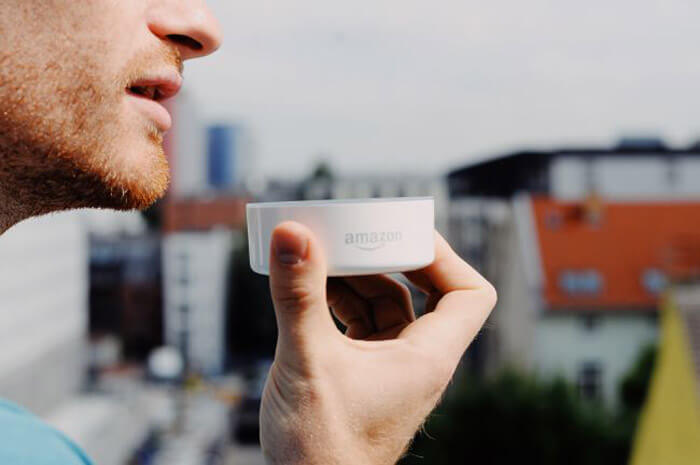
7. Virtual reality becomes available to the masses
Virtual reality is increasingly becoming a part of our lives. The technology can be used in countless fields, starting from the entertainment industry, through retail trade, and even the field of medicine. Virtual reality is no longer part of a science fiction movie, but part of everyday life.
At the same time, UX designers have a huge responsibility to make their technology available to the general public. They have to create an easy-to-use and accessible user experience so that most users accept, or rather absorb, these contents.
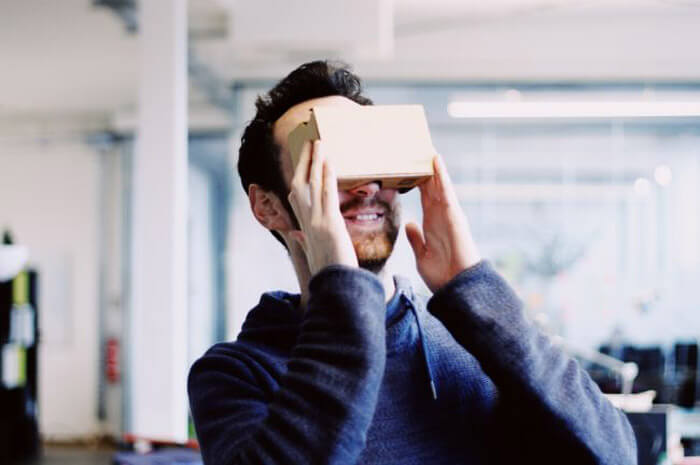
8. User experience design (UX Design) reaches the meeting rooms
All signs point to UX designers finally getting the recognition they deserve. More and more company managers are realizing the importance of user experience design when designing or even launching a service or product on the market.
Attitudes have changed enormously in recent years, UX design is no longer seen as just a toy for graphic designers and web designers, but has progressed to one of the most important processes in design!
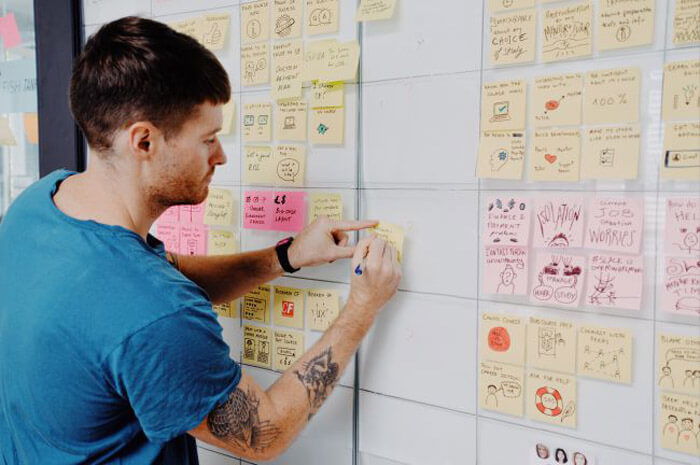
9. Tools for everyone
As UX becomes more and more a team effort, one of the biggest challenges for businesses in 2018 is creating effective workflows. Project management tools and internal communication platforms will play an even bigger role this year. Likewise, we can expect more attention to be paid to collaborative, cloud-based tools.
Closer cooperation between designers and developers also requires new generation tools. More and more programs will appear on the market, which were created not only for designers or developers, but for efficient coordination of work processes.

10 quick UX Design tips to improve user experience
Although we all know that user experience is important, it is often neglected due to other aspects of the website. In many cases, we focus on graphics and appearance, as this gives the company's image, but many people forget that these two things are connected. It is difficult to create a successful website that has outstanding visual design but lacks a good user experience, and vice versa.
User experience is important because it focuses uniformly on the entire website. Even if appearance is a priority, site accessibility, speed, easy navigation, brand image retention, social media integration, and a good user experience are vital to success.
It is very difficult to pay attention to so many things at the same time, so we can easily make the mistake of perfecting a part of the user experience while neglecting other aspects during development. It is often more useful to make many small improvements and improvements than to deal with a big problem.
In my list, I have collected 10 minor improvements that can greatly improve the user experience.
1. Survey of users
The first point on our list of ten is getting to know the users. How do you know what your users want from your website if you don't ask them? A little survey will go a long way in understanding what the people who visit your website want and need.
A common solution for surveying guests is to display a questionnaire during browsing or after the purchase, or you can send the survey by e-mail to subscribers. As an incentive, you can even give people something small as a gift for participating in the survey.
While surveying guests alone won't improve the user experience, it's still worth taking the time to do. The results of the survey will form a to-do list that will guide the development of the site in the short and long term.
The System Usability Scale is a type of survey that was specifically designed to show the visitors' opinion of the website. Plus, it's incredibly easy to do.
2. The goal
One of the keys to a good user experience is research. You may have already determined what users want from the site, but do you know what you want from them?
A website without a clear purpose will not lead to a good user experience. If visitors remain in the dark about the website's purpose, how can you optimize their experience?
Before you start working on any other part of the website, you need to decide what the main purpose of the site will be. Many types of goals can be imagined, from selling the product to providing information to building an expert role or increasing brand awareness. Make a precise description of the goals and never lose sight of them.
3. Page speed
Even though responsive design is not on this top ten list, page speed is an aspect that is absolutely essential. If your website takes more than a few seconds to load, either on a computer or on a mobile phone, you will lose visitors, unfortunately not a few.
According to Google's September 2016 report, 53% of mobile users will abandon a website that takes more than 3 seconds to load, proving the importance of fast loading.
There is a kind of expectation regarding the speed and loading time of the pages. The slower the site, the more frustrated users will be. This frustration will lead to increased bounces and lower conversions, which will negatively impact your business over time.
4. Design and layout
Web design is a very complex and subjective field, but a good design and layout can work wonders. There are certain aspects of web design that are directly related to user experience. One such aspect is the text-to-image ratio. This is an individual value for each website. Continuous testing may be the best way to determine what works best for us.
Another important factor to keep in mind is the use of white space on the page. White space (there isn't much of a Hungarian equivalent) is basically the space between elements on a page. If you use it correctly, you will get a layout that provides an aesthetic and balanced view. White space improves readability, interaction and even helps the visitor with navigation.
5. Readability
Similar to the aforementioned point, readability is also very important to keep in mind. By working on breaking down content per page during design, improving readability can be an incredibly easy way to develop a better user experience.
Improving readability includes the use of lists and headings, which you can use to break down larger texts into smaller, easier-to-understand parts.
I already mentioned white-space in the previous point. White space is not only a common expression in graphics, you can also use it to break up a large amount of text into smaller paragraphs and blocks. This little trick improves readability and makes the text easier to scan.
Another part that belongs to readability is the font size, line length and letter spacing. It is also important to pay proper attention to these. One of the leading reasons for leaving the page is that the visitor cannot read the texts on the page that are formatted in too small a font.
6. Call-to-Action (CTA)
A Call to Action encourages the user to take a certain action, usually in the form of a button, icon or link. CTAs are incredibly important elements of websites advertising products and services. However, if you exaggerate the use of CTAs, it can make the page look too sales-oriented or spammy, which is recommended to avoid because you can lose users' trust.
Instead, you will probably achieve a much better effect with fewer but well-placed and carefully thought-out CTAs. It is recommended to avoid the use of multiple CTAs within one page, as it worsens the conversion. Focus on the main goal (purchase, order, contact, sign up, ... etc.) and avoid collisions. The design, structure, and structure of the page should support the CTAs and gently guide the user towards the goal we want to achieve (see also: conversion path).

7. Images
Images are a web designer's best friend, provided you use them correctly. The problem is primarily when we use too many or, on the contrary, too few images. If only because nowadays consumers judge websites based on images.
Low-quality or stereotyped stock photos will be ignored by visitors. The images appearing on the website convey authenticity and reliability in the eyes of visitors. That's why my tip regarding the images: use your own photos, even if they are of lower quality and less well-adjusted than stock photos. Many large companies deliberately spoil the quality of their own photos in order not to be confused with stock photos and thus build credibility. Since images are primarily responsible for slow page loading, it is important to optimize them in terms of size and compression.
8. Graphics
Not to be confused with images, graphics are another key element of user experience. Logos, icons, banners, and countless other graphics are one of the best tools in your repertoire when it comes to website customization.
High-quality graphics have the potential to boost website traffic. They are versatile and can be easily redesigned, so they can also be used on the brand's social media pages and advertisements.
I think it is important to mention that all the graphics follow the same design theme (face, color, style ... etc.) in order to fully respect the identity and image of the brand.
9. Social media integration
Integrating the website and the company's social media pages is a good opportunity to share the content on the website on social media channels, thereby reaching a significantly larger number of people. In addition, social media is one of the best platforms for introducing potential customers to your brand. And you can increase the user experience on your website if you give the visitor the opportunity to share your articles on the social media sites that are important to him.
10. Consistency
Last but not least, consistency should come. In fact, consistency is one of the most important parts of improving user experience. Consistent adherence to the first 9 points will lead to general satisfaction from your visitors, which is a direct way to increase the popularity of your website.
One way to maintain consistency is to use style guides. The style guides accurately describe the colors, fonts, shapes, and graphic elements used on the page, but they also cover the text and wording. No matter which part of your website you develop, it is important to follow the rules laid down in the style guide exactly, because this way you can keep the consistent design of the entire site.
The best UX blogs
If you want to read more on the topic, I recommend the following UX blogs:
- Smashing Magazine, UX Design kategória
- A List Apart
- Az UXPin ingyenesen letölthető E könyvei
- Nielsen Norman Group
- UX Myths
- Measuring U
- Foolproof, Thinking aloldala
- Usability Geek
You can find quite a few more UX blogs in this article.


